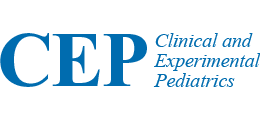All issues
>
Volume 0(0);
-
Review Article
-
- Cost-effectiveness of newborn screening for severe combined immunodeficiency: a systematic review
-
Rezwanul Rana1,2
 , Syed Afroz Keramat3, Moin Ahmed4
, Syed Afroz Keramat3, Moin Ahmed4
-
1Macquarie University Centre for the Health Economy, Macquarie University, NSW 2109, Australia
2Australian Institute of Health Innovation, Macquarie University, NSW 2109, Australia
3Centre for Health Services Research, Faculty of Health, Medicine and Behavioural Science, The University of Queensland, Brisbane, QLD 4072, Australia
4Faculty of Medicine and Health, University of Sydney, NSW 2050, Australia
- Correspondence Rezwanul Rana ,Email: rezwanul.rana@mq.edu.au
- Received: January 9, 2025; Revised: March 18, 2025 Accepted: March 24, 2025.
- Abstract
- Severe combined immunodeficiency (SCID) is a rare genetic disorder that causes severe infections and death in early childhood. Newborn bloodspot screening (NBS) for SCID using the T-cell receptor excision circle assay can revolutionize the early detection and treatment of infants with SCID, leading to improved quality of life and life expectancy. This systematic review aimed to examine the cost-effectiveness of universal NBS for SCID. The MEDLINE, Embase, NHS Economic Evaluation Database, Health Technology Assessment, Scopus, and EconLit databases were searched for studies of the NBS for SCID published between January 2008 and March 2024. A standardized data extraction form was used to gather pertinent data such as characteristics, design, perspective, screening strategies and costs, health outcomes, incremental cost-effectiveness ratios, and sources of uncertainty. Eight studies met our inclusion criteria: six cost-utility analyses and two cost-effectiveness analyses. All studies were model-based economic evaluations. These studies indicated that universal NBS for SCID is highly likely to demonstrate health system and societal cost-effectiveness. The incremental cost-effectiveness ratio per quality-adjusted life-year gained ranged from $30,214–54,282 (USD 2022 value). Evidence suggests that early treatment of SCID is beneficial and that population-based NBS provides good value for the money. However, policymakers require better information about optimal treatment and treatment and screening costs to make informed decisions regarding competing healthcare priorities.
Keywords :Severe combined immunodeficiency, Newborn bloodspot screening, Economic evaluation, Cost-effectiveness, Systematic review
 , Syed Afroz Keramat3, Moin Ahmed4
, Syed Afroz Keramat3, Moin Ahmed4 
 About
About Browse articles
Browse articles For contributors
For contributors
